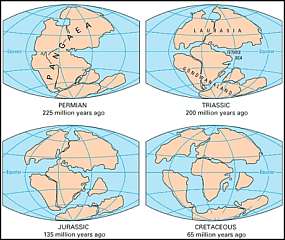‘The LORD is slow to anger and abounding in steadfast love, forgiving iniquity and transgression, but he will by no means clear the guilty, visiting the iniquity of the fathers on the children, to the third and the fourth generation.’
—Numbers 14:18 ESV
Despite the fact that the vast majority of scientific discoveries that undergird our modern life were made by Christians and that science in Europe outstripped science in the East and Middle East because Christian Europeans believed God is knowable and His Creation understandable, atheists continue to overlook facts and claim Christians are anti-science. They claim that believing the Bible is tantamount to disbelieving science, and they like to insist the Bible, when it talks about science, is “underinformed.”
Lately, I’ve been fascinated with the science of epigenetics, and I am because of the Bible verse that begins this post.
Epigenetics explains some of the presence of supposed “junk” in the human genome and why we can’t trace every genetic outcome to genes alone. While standard genetic theory could account for the sameness of identical twins, even down to shared behaviors, it could not account for the differences. Enter epigenetics.
When Darwinism hit Victorian sensibilities like a sledgehammer, it also pounded the life out the widely accepted theories of Jean-Baptiste Lamarck. Lamarckism postulates that a generation could make choices and changes it could then pass on to progeny. While Lamarck did not originate the idea, he nonetheless championed it and expanded on its principles so well that it gained his name.
Like many Enlightenment scientists in France, Lamarck was not a supporter of Christianity. That said, he continued to believe that chance did not run the cosmos, adhering to the ordered, planned, and meaningful universe concept likewise expressed by Christians.
Today, the field of epigenetics is so hot, it borders on incendiary. It turns out there may be more to the idea of being “born that way,” no matter what type of deviance or godliness “that way” might be.
Epigenetics demonstrates that a good or bad genetic expression may not express unless turned on. Remarkably (or should I write Lamarckably), an organism may have the genetic predilection toward a bad outcome yet that bad outcome never arises. Conversely, it may if switched on by the environment, nurture, or personal choices. The genetic disease possessed by twins may be expressed solely by the twin who decides to eat certain types of food; the gene combo for the disease literally switches on due to epigenetics. And this can also be passed to progeny.
Which is where sins of the fathers kick in. Epigenetics is showing that repeated bad choices by a parent can lead to a tendency in the offspring to manifest the same bad behavior. Lamarck rears his head yet again.
So, the visitation of the iniquities of the fathers (and mothers) to the third and fourth generation has a possible epigenetic link. Some epigeneticists are able to break down certain sinful behaviors into father-spawned or mother-spawned. Contrariwise, a godly parent may pass on a positive epigenetic tendency toward his or her offspring’s faith in God.
We are fearfully and wonderfully made, yet we are also damaged by the Fall of Man. That damage goes deep, even to our genetics, which we are now learning may bend us toward wrongful behavior because of what our moms and dads did. Or in those cases when we overcome, toward faithful living.
Looks like a case of science proving the Bible.


